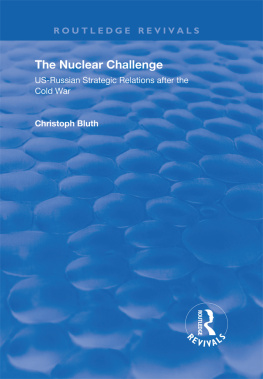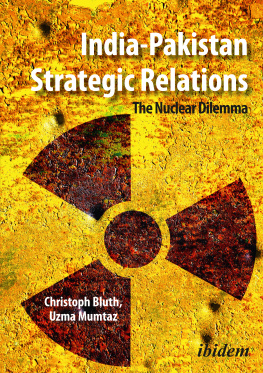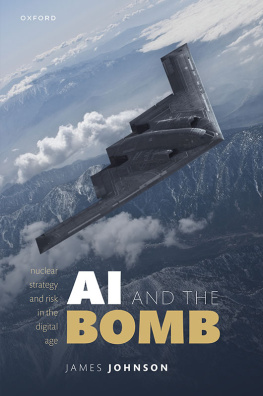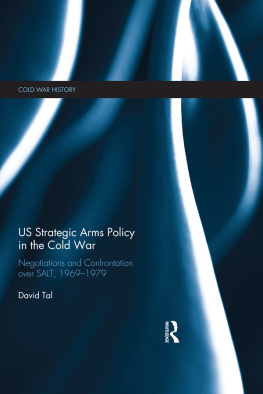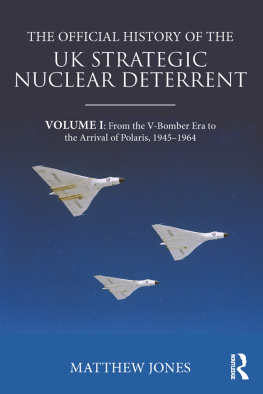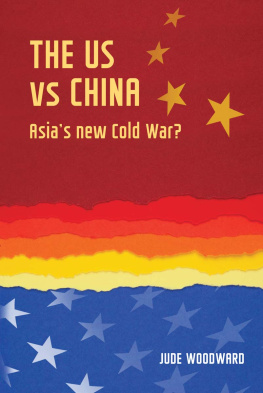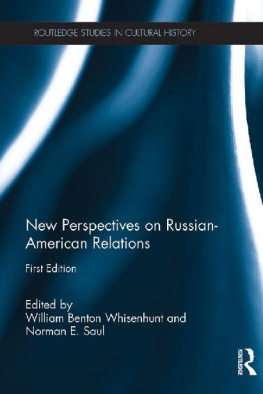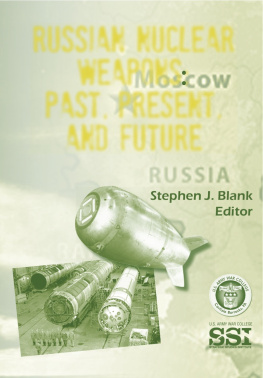THE NUCLEAR CHALLENGE
For Alison
The Nuclear Challenge
US-Russian strategic relations after the Cold War
Christoph Bluth
University of Leeds
First published 2000 by Ashgate Publishing
Reissued 2019 by Routledge
2 Park Square, Milton Park, Abingdon, Oxon, OX14 4RN
52 Vanderbilt Avenue, New York, NY 10017
Routledge is an imprint of the Taylor & Francis Group, an informa business
Copyright Christoph Bluth 2000
All rights reserved. No part of this book may be reprinted or reproduced or utilised in any form or by any electronic, mechanical, or other means, now known or hereafter invented, including photocopying and recording, or in any information storage or retrieval system, without permission in writing from the publishers.
Notice:
Product or corporate names may be trademarks or registered trademarks, and are used only for identification and explanation without intent to infringe.
Publisher's Note
The publisher has gone to great lengths to ensure the quality of this reprint but points out that some imperfections in the original copies may be apparent.
Disclaimer
The publisher has made every effort to trace copyright holders and welcomes correspondence from those they have been unable to contact.
A Library of Congress record exists under LC control number:
ISBN 13: 978-1-138-72165-4 (hbk)
ISBN 13: 978-1-315-19432-5 (ebk)
This book marks another stage of a long journey to unravel the complexities of nuclear weapons policies, their far-reaching real and potential consequences for the whole of mankind and the steps that can be taken to avert the risks and dangers that we all face, whether we are aware of it or not.
I have been encouraged and helped in my endeavours by many friends and colleagues. I especially want to single out William C. Potter, whose enormous commitment to the cause of nuclear safety and non-proliferation and whose support of my work in various small but significant ways has made this book possible, and Nikolai Sokov who shares my fascination with Russian nuclear weapons programmes. The late Oumerisik Kasenov, formerly Director of the Kazak Institute of Strategic Studies, was a good friend who introduced me to the complexities of Central Asian politics from the inside.
Others include Roy Allison, Pavel Baev, Debbie Ball, Bruce Blair, Emily Ewell Daughtry, Andrea Ellner, Rose Gottemoeller, Irina Isakova, Yelena Kalyuzhnova, Roman Laba, Murat Laumulin, Ronald Lehman, John Lepingwell, Dov Lynch, Steve Miller, Robert O'Neill, Vyacheslau Paznyak, Alexander Pikaev, Robert Rinne, Scott Sagan, Hans-Henning Schroder, Jane Sharpe, Jessica Stern, Anton Surikov, Dmitri Trenin, Heinrich Vogel, David Yost, Obviously I have sole responsibility for any opinions expressed in this volume, and any errors it may contain. Natalie Hey and Lorraine Sherriff helped with preparing the typescript for publication. Thank you to Alison Williams for putting up with my obsession with the topic of nuclear weapons and your enduring love and support.
The strategic nuclear 'amis race' was arguably the most dramatic feature of the Cold War. It was the existence of two large and growing arsenals of strategic nuclear weapons and the capability to inflict total devastation at any part of the world that gave the East-West confrontation its global character and imbued it with an apocalyptic quality. One of the peculiar paradoxes of the political processes whereby the Cold War ended is that while the military confrontation in Europe was effectively ended by the Soviet withdrawal from Eastern Europe and the Conventional Forces in Europe (CFE) treaty regime, the strategic nuclear force postures remained virtually intact. Communism has virtually disappeared as a political force, the Warsaw Pact has been dissolved. Eastern Europe is now free, and the Soviet military machine that kept the Communist regimes in power and threatened to roll over Western Europe at short notice has removed itself from the scene. Indeed, the might Soviet Union itself has fallen. And yet, vast arsenals of strategic nuclear weapons are still in place, capable of destroying the economic foundation and annihilating the population of the other side. The end of the Cold War should in principle also mean the end of the strategic nuclear confrontation. As the Russian government is seeking a close co-operative relationship with the United States, the political function of large strategic nuclear arsenals needs clarification. It seems strange for two countries who are partners or even allies to target nuclear weapons at each other. Although there has been a symbolic agreement between Russia and the United States not to target weapons at each other, the technical means for mutual destruction at short notice are still in place. So far, the United States and Russia have found themselves unable to emerge from the eerie twilight zone of mutual assured annihilation.
An additional problem arises from the fact that Russia is passing through a profound economic and social crisis. In this context, the huge arsenal of advanced nuclear and conventional weapons produced and deployed or stockpiled by the former Soviet Union represents a potential security risk of enormous magnitude in an environment where governmental control over all institutions in society has become weak and uncertain. To provide for the security and safety of nuclear weapons and materials, to prevent the illicit smuggling of plutonium and highly enriched uranium and to prevent nuclear scientist from selling their expertise to other states has become the focus of a concerted joint effort by the United States and Russia.
This purpose of this study is to look at the role of strategic nuclear arms control in US-Russian relations. The principal assumption here is that after the Cold War this relationship is in a process of transition from a fundamental mutual antagonism to one of partnership. The fate of nuclear weapons and the formulation of nuclear weapons policies must of course be seen in the context of the international security environment as a whole. It is the purpose of this chapter to look at some of the principal features of this environment and explain the fundamental directions of nuclear weapons policy that suggest themselves with a high degree of urgency.
The end of the Cold War has raised very fundamental questions for the security and defence establishments, particularly in Europe and North America. First of all the new international security environment has to be understood. This must involve an analysis of the end of the Cold War and its implications, the range of threats or potential future threats to national security and the proper instruments required to meet them. Then a reassessment of the requirements for military capabilities may be possible.
Interpreting the end of the Cold War
Neo-realist analysis, such as it has been recently expounded by, for example, John Mearsheimer and Kenneth Waltz,
In the neo-realist understanding of international relations, the East-West conflict, which emerged in the aftermath of World War II was a natural consequence of the post-war balance of power and is best understood as the rivalry between two Great Power systems.
The explanation given for the fact that the East-West confrontation did not result in military conflict between the main protagonists (hence the term 'Cold War') and the absence of war in Europe during the last 45 years (described as the 'Long Peace' by John Lewis Gaddis) is the bipolar distribution of power which is seen as contributing to stability and the development of large strategic nuclear arsenals which raised the cost of war to an unacceptable level.


